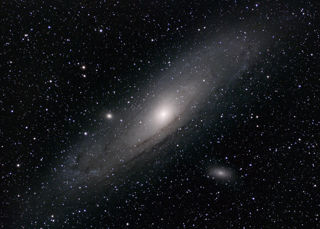
Blue Streak
Blue Streak
Blue Streak rocket #F16. This was the last Blue Streak ever made and was rescued off the Hawker Siddeley Dynamics production line by Liverpool Museum in 1971. It is an example of a British-built liquid fuelled rocket. Blue Streak was initially designed as a ballistic missile. In 1954, as Cold War tensions grew, the USA approached the British government with a proposal for a joint ballistic missile programme. The USA would develop an Intercontinental missile, and the UK would develop a missile with a range of 2,500 – 3,000 miles. Britain accepted the proposal and called their missile Blue Streak.By 1955, design of Blue Streak was under way. De Havilland Aircraft (which later became part of Hawker Siddeley Dynamics) were tasked with building the main body of the rocket, whilst Rolls Royce built the engines. The Americans worked quickly developing their half of the plan. American Thor and Atlas rockets were ready for testing by 1957. But progress in Britain was slower, with design for the Blue Streak still at an early stage. By 1959, Britain had not yet built a prototype. The cost of the programme compared to the original estimate had escalated by 600%. Blue Streaks were designed to be launched from underground silos, protecting them from attack. This would prove to not be practical, as the small size of the British Isles meant that these launch silos would have to be located near towns and villages, making the inhabitants vulnerable to nuclear attack. In 1960, the Minister of Defence cancelled Blue Streak, saying that it was no longer good value for money. However, France was interested in developing a European satellite launcher. In 1961, the UK government met with other European leaders and the European Launch Development Organisation (ELDO) was born. Blue Streak was to be the first stage of a new European satellite launcher called Europa. The French would build the second stage, called 'Coralie', whilst the Germans worked on the third stage, known as 'Astris'. The remaining partner countries, meanwhile, developed the satellite technology that was to be launched.
In 1961, Blue Streak was test-fired for the first time. Three years later, the first Blue Streak was launched from Woomera in Australia. Altogether eleven Blue Streaks were launched - all of them were successful. However, the Europa system as a whole was not and never managed to put a satellite into orbit. There were repeated problems with the separation between the stages. The British Government lost enthusiasm for the project, which had become very expensive. The failures of the upper stages of Europa gave Britain an excuse to pull out of ELDO. However, the engineers who worked on Blue Streak felt that Europa was a learning curve and that they were on the verge of getting everything right when it was cancelled. The French designed a new first stage to fill the gap left by Blue Streak, as work carried on without Britain. The European launch system evolved into the Ariane series of rockets, one of the most successful satellite launchers there has ever been.
The Blue Streak on display at the National Space Centre is on loan from National Museums Liverpool, and, as it was never completed, the engines and the other accessories are miscellaneous spares, not necessarily intended to go with this rocket. The fuel tanks that make up the main body of the rocket are made of stainless steel less than 1mm thick, as Blue Streak used liquid oxygen and kerosene for fuel. For oxygen to become liquid, it has to be cooled to –183°C, at which temperature steel becomes very brittle. To prevent the steel cracking the Blue Streak engineers made the walls as thin as possible – today it is necessary to pressurise the fuel tanks to prevent the steel from buckling under atmospheric pressure whilst on display.
All images:
-
![Blue Steak on display - Credit: National Museums Liverpool, World Museum/National Space Centre]()
Blue Steak on display - Credit: National Museums Liverpool, World Museum/National Space Centre -
![Blue Streak, showing the location of the main tanks - Credit: National Museums Liverpool, World Museum/National Space Centre]()
Blue Streak, showing the location of the main tanks - Credit: National Museums Liverpool, World Museum/National Space Centre -
![Blue Streak on display - Credit: National Museums Liverpool, World Museum/National Space Centre]()
Blue Streak on display - Credit: National Museums Liverpool, World Museum/National Space Centre -
![Blue Streak and Thor Able being installed in the Rocket Tower - Credit: National Museums Liverpool, World Museum/National Space Centre]()
Blue Streak and Thor Able being installed in the Rocket Tower - Credit: National Museums Liverpool, World Museum/National Space Centre
More information
Object number
L2000-73 pt 1
Location
Rocket Tower
Has this object been into space?
No
Dimension - Dimension, Value, Measurement unit
Depth: 3.05m
Height: 18.34m
Width: 3.05m
Weight: 3600kg
Material
Stainless Steel
Object Production Date
Circa 1971
Object Production Organisation
De Havilland Aircraft Company Limited
Rolls-Royce Limited
Object Production Place
United Kingdom
Credit Line
On loan from National Museums Liverpool, World Museum
On Display Status
On display
Copyright and Photos
Photography is shared via the license below.
However, some objects on this website are on loan to the National Space Centre and are being shared through the permission of their owners.
Commercial use of images from this website is not allowed without additional permissions being granted. To request permission to use images for purposes not covered in the license below, please contact [email protected]
Individual objects on loan to the National Space Centre may have additional copyright permissions, so advice should always be sought before use.
![]()
This work is licensed under a Creative Commons Attribution-NonCommercial 4.0 International License.





